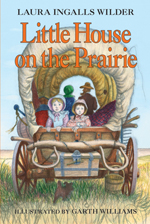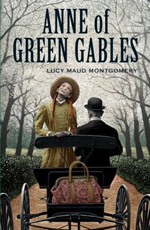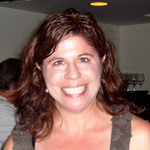Essay by Abby Kurzman
Writing to Capture Moments in Time
I never worshipped celebrities, even when I was a kid. I preferred heroines who were just like me.
Laura Ingalls—the author and star of the Little House books about a pioneer family—fit the bill. She was a middle child, loving, mischievous, brave, smart, and not easily swayed by her peers. Unlike her well-behaved older sister Mary, if Laura was mad or envious, we all knew it. The Little House books were sweet and spicy, and I gobbled them all up.
 When I was 10, I even tried to get people to call me Laura. My older sister Toby, with her short, curly Jewfro, was an unlikely Mary. My little sister Myrel was Carrie. In the supermarket, I’d call out: “Carrie, don’t run away!” “Mary, do you know which aisle has the Tang?” Toby would look at me like I was crazy. The real Mary, of course, had survived childhood Tang-free.
When I was 10, I even tried to get people to call me Laura. My older sister Toby, with her short, curly Jewfro, was an unlikely Mary. My little sister Myrel was Carrie. In the supermarket, I’d call out: “Carrie, don’t run away!” “Mary, do you know which aisle has the Tang?” Toby would look at me like I was crazy. The real Mary, of course, had survived childhood Tang-free.
I thought that if Laura could become a published author, so could I. I’d write the continuation of the series, depicting the Ingalls family coming all the way from 1860s Minnesota to visit me in 1970s Massachusetts.
Adventures would ensue. I’d introduce the Ingalls to television (although I’d probably keep the Little House on the Prairie series under wraps). I’d show them our car and take them swimming at the indoor pool. We’d all go to the movies. They’d admire my bell-bottoms and green sneakers. And we’d go to the supermarket, where I’d show them the prepared foods, such as Tang, that we were so proud of back then. Laura and I would braid each other’s hair, then we’d play Kerplunk and Twister until we were a tangled, giggly mess.
You’ve probably figured out by now that I never wrote my Little House sequels. In fact, I’ve yet to write anything so substantial.
Instead, I attend book readings, hoping the discipline of others—Barbara Kingsolver, Dave Eggers, Jhumpa Lahiri, Nick Hornby—might rub off on me. I’ve found that at any book reading, there are two inevitable questions from the audience. The first is “Where do you get your ideas?,” and the second is “How did you do it?”
The answer to the first is usually something like “It just came to me.” Barbara Kingsolver explained that, for years, she stashed away in a file cabinet the notes and ideas that became The Poisonwood Bible. She made it sound so easy, but I know her writer’s brain had been mulling over—and milling—the story for all that time.
While I know a writer’s material doesn’t pop into her head polished and ready to share, I do believe the first kernels grow spontaneously. Life provides plenty of good fodder. I know mine does.
I have a box full of scraps of paper, each scribbled with an idea to pursue: Why is that woman carrying a taxidermic kangaroo across City Hall Plaza? Where did that girl in Copley Square get that huge sunflower? Who named that cashier Glory Be, and why does she look so miserable, resisting my attempts at eye contact?
What to do with all that wondering? How do I weave it into a story? Which brings me to the second question I hear at book readings: “How do you do it?“
 Nick Hornby responds simply that he forces himself to sit down and write—forcing me, in turn, to wonder: When will I do that? When I feel inspired? When I clean off my desk? When I finish this semester, this article, this pizza?
Nick Hornby responds simply that he forces himself to sit down and write—forcing me, in turn, to wonder: When will I do that? When I feel inspired? When I clean off my desk? When I finish this semester, this article, this pizza?
When I was in fifth grade and deep into the Anne of Green Gables series, I was asked what I wanted to be when I grew up. I confidently replied, “A writer.” I thought I had what it took: imagination and a way with words. I’d received excellent grades for my creative works about purple, multi-eyed, and multi-legged creatures of alien descent. Beside, writing was fun. At least, until I encountered my first essay exam in political science. Then, suddenly, writing was work. Hard work.
I might offer the excuse that my free-flowing creativity was squelched by training in “how to write the perfect essay,” by teaching philosophies that boil down to “this is what the famous author believes and you must agree,” and, later, by 15 years as a marketing copywriter.
But, really, all this time I’ve never fully committed myself to the zone. When athletes talk about performing at their best, they talk about being “in the zone,” that place where training and strength and endurance and talent merge into an easy, flowing triumph. I find my own zone when the words inside me make their way out to the world through my fingers, dancing across the keyboard to their own beat.
For Laura Ingalls, the characters and events in her life were fodder for fiction. It’s time for me to follow her lead.
Ralph Waldo Emerson said, “We hear, that we may speak.” I’d add, “We observe, that we may write.” Even if what we’re observing is a woman carrying a taxidermic kangaroo through an urban plaza.
Publication Information
- The Little House on the Prairie by Laura Ingalls Wilder, originally published in 1935, copyright Little House Heritage Trust (HarperCollins, 2010).
- More information on the Little House book series is available on the Little House website.
- Anne of Green Gables by Lucy Maud Montgomery (L. C. Page, 1908).
- “The American Scholar” by Ralph Waldo Emerson, first delivered as a speech to the Phi Beta Kappa Society in Cambridge, Massachusetts, on August 31, 1837.
 Abby Kurzman is an editorial assistant at Talking Writing.
Abby Kurzman is an editorial assistant at Talking Writing.
“I wish I’d thought of it first. Take Pride and Prejudice, one of the best novels ever written, and tell it from Mr. Darcy’s point of view." — "He's Not Proud"
